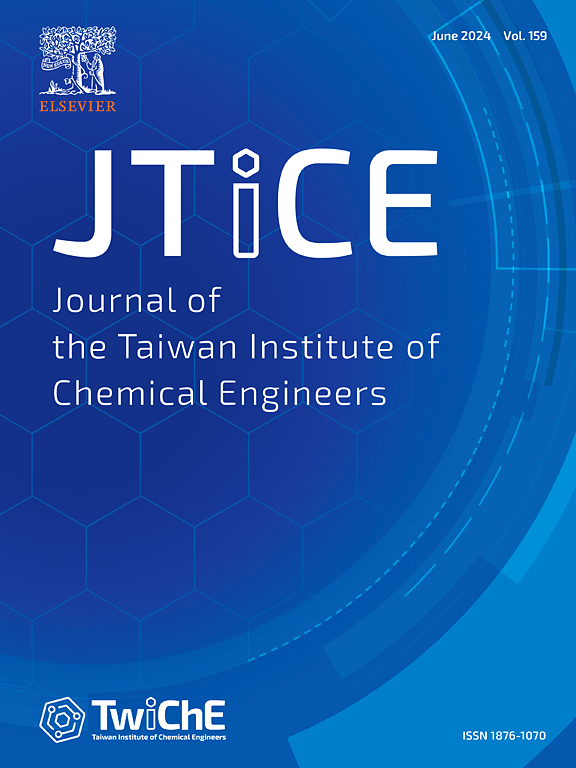基于流形正则化自编码器的自适应时空邻域特征学习用于工业过程监控
IF 6.3
3区 工程技术
Q1 ENGINEERING, CHEMICAL
Journal of the Taiwan Institute of Chemical Engineers
Pub Date : 2025-07-01
DOI:10.1016/j.jtice.2025.106235
引用次数: 0
摘要
背景:过程监控系统是现代工业过程安全的关键。然而,现有的方法通常从数据中提取空间特征,而没有考虑工业过程数据中固有的动态时空信息,从而影响了监测的准确性。方法:提出了一种用于过程监测的自适应时空流形正则化自编码器(ASMRAE),其目的是在提取特征的同时保持时空邻域结构。具体来说,设计了一种自适应时间邻域权重计算方法来调整时间邻域内的空间结构,以适应时间信息的变化。时空邻域拓扑以概率方式描述,以适应工业过程数据中固有的不确定性。通过最小化原始数据和提取特征之间的时空邻域结构的概率分布,得到的特征捕获了时空信息。最后,构造T2和SPE统计信息用于监视目的。重要发现:实验结果表明,捕获准确的时空结构可以提高监测性能。在醋酸乙烯单体工艺和铝电解工艺中验证了该方法的有效性。本文章由计算机程序翻译,如有差异,请以英文原文为准。
Adaptive spatiotemporal neighborhood feature learning based on manifold regularization autoencoder for industrial process monitoring
Background:
Process monitoring systems are crucial for process safety in modern industries. However, existing methods typically extract spatial features from the data without considering the dynamic spatiotemporal information inherent in industrial process data, which affects the accuracy of monitoring.
Method:
This paper proposes an Adaptive Spatiotemporal Manifold Regularization Autoencoder (ASMRAE) for process monitoring which aims to extract features while preserving the spatiotemporal neighborhood structure. Specifically, an adaptive temporal neighborhood weight calculation method is designed to adjust the spatial structure within the temporal neighborhood, adapting to changing temporal information. The spatiotemporal neighborhood topology is described probabilistically to accommodate the uncertainty inherent in industrial process data. By minimizing the probability distribution of the spatiotemporal neighborhood structure between the raw data and the extracted features, the resulting features capture spatiotemporal information. Finally, and SPE statistics are constructed for monitoring purposes.
Significant Findings:
The experimental results show that capturing accurate spatiotemporal structures can enhance monitoring performance. The effectiveness of the proposed method is validated in the Vinyl Acetate Monomer process and Aluminum electrolysis process.
求助全文
通过发布文献求助,成功后即可免费获取论文全文。
去求助
来源期刊
CiteScore
9.10
自引率
14.00%
发文量
362
审稿时长
35 days
期刊介绍:
Journal of the Taiwan Institute of Chemical Engineers (formerly known as Journal of the Chinese Institute of Chemical Engineers) publishes original works, from fundamental principles to practical applications, in the broad field of chemical engineering with special focus on three aspects: Chemical and Biomolecular Science and Technology, Energy and Environmental Science and Technology, and Materials Science and Technology. Authors should choose for their manuscript an appropriate aspect section and a few related classifications when submitting to the journal online.

 求助内容:
求助内容: 应助结果提醒方式:
应助结果提醒方式:


